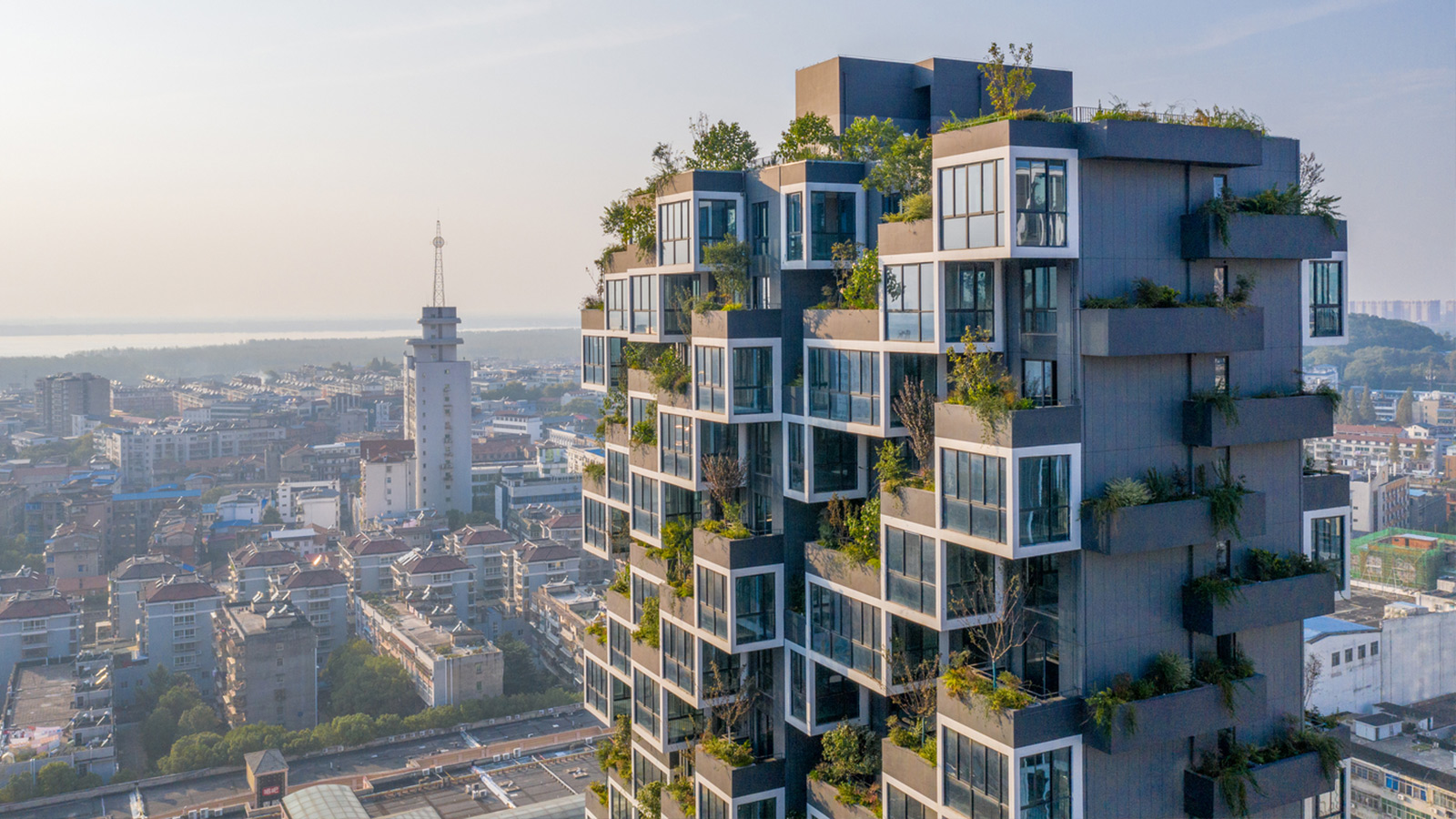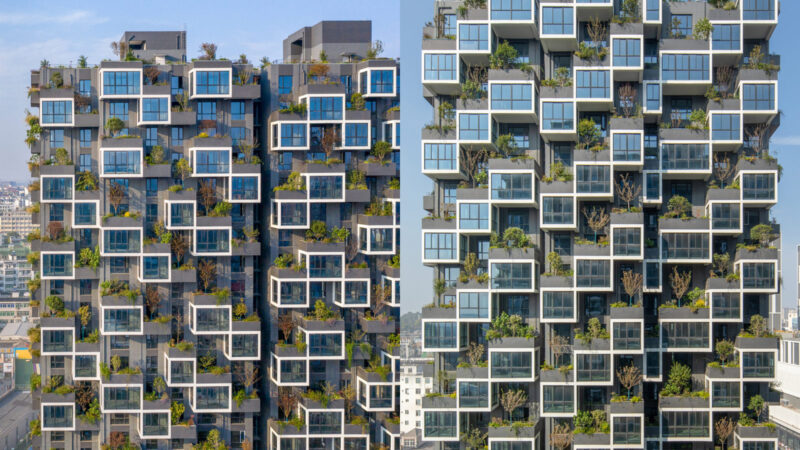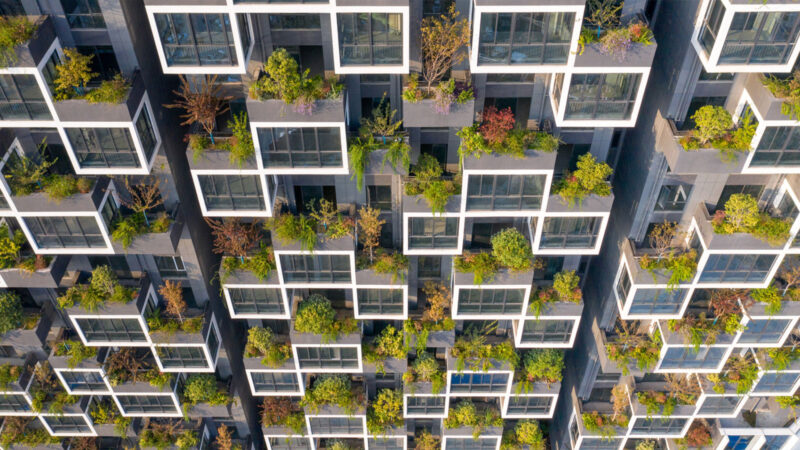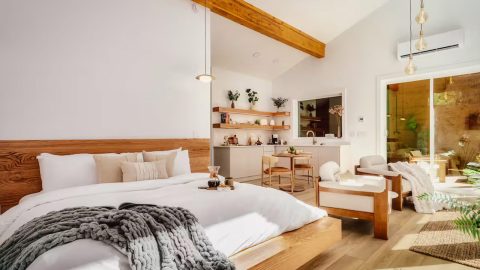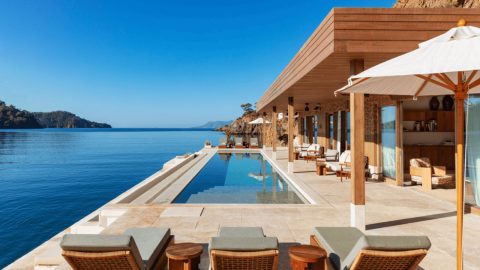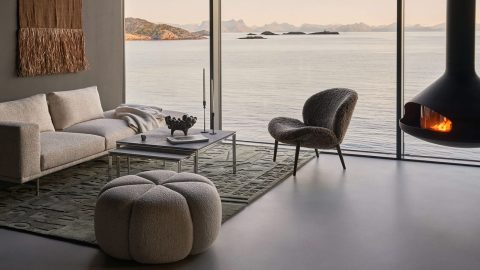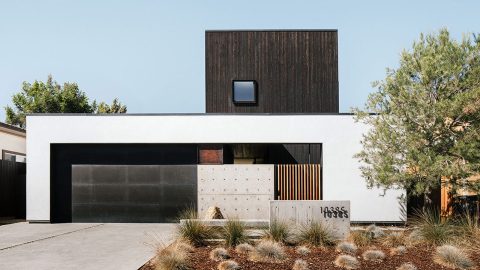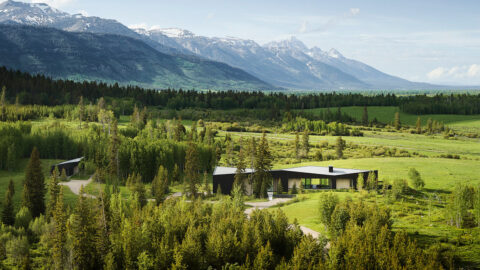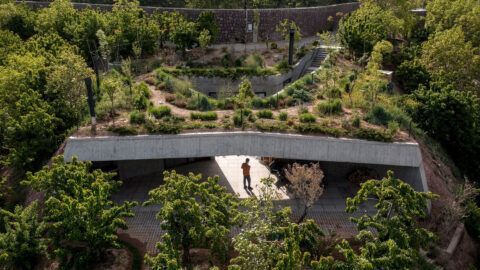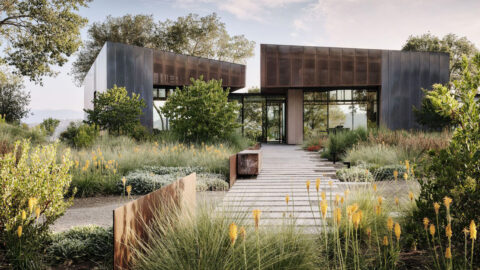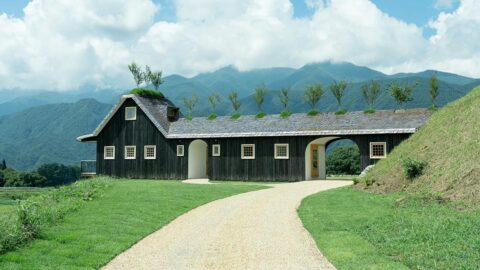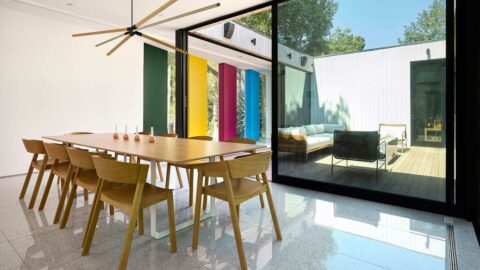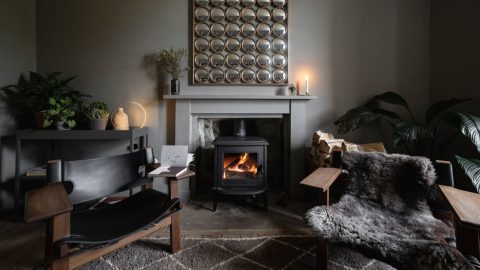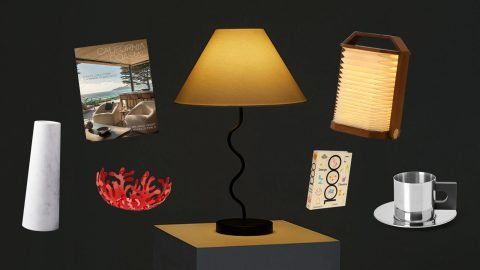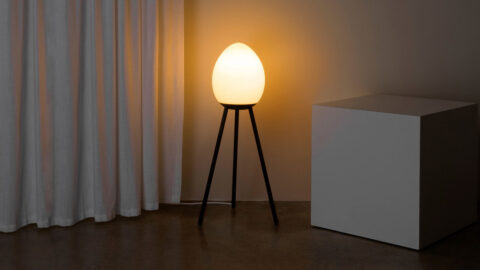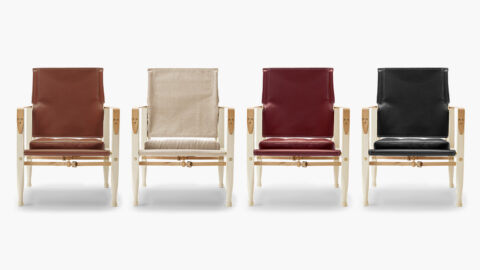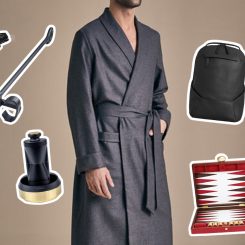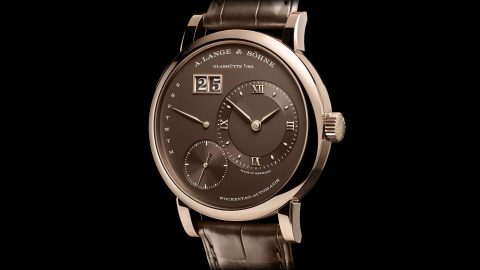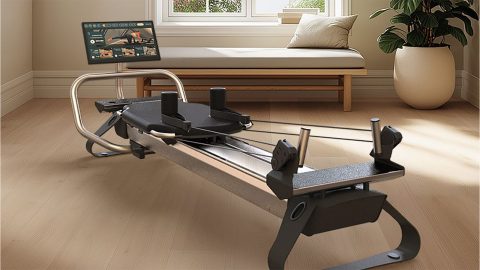The Easyhome Huanggang Vertical Forest City Complex, located in China’s Hubei province, comprises five towers – two residential, while the rest are dedicated to hotels and large commercial spaces. Designed by Stefano Boeri Architetti, the two residential towers are 262-feet high and they are designed as ‘vertical forests.’ A whopping 404 trees absorb 22 tons of carbon dioxide a year while producing 11 tons of oxygen. In addition to the trees, the homes also comprise 4,620 shrubs and 2,700 sq. ft. of grass, flowers, and climbing plants. “The completion of the Easyhome Huanggang Vertical Forest City Complex is a big step in the practice of Stefano Boeri’s green concept in China,” says Xu Yibo, partner of Stefano Boeri Architetti China. “This project represents very comforting news for all of us: we hope that one day everyone will have the chance to live close to nature in their own private area rather than just in public buildings. The Vertical Forest model in residences will fundamentally transform the landscape of future cities and change peoples’ expectations for future ecological life.”
The Easyhome Huanggang Vertical Forest City Complex combines open and closed balconies, which interrupts the flow of the building and creates a rhythm that is both continuous and ever-changing. The presence of trees and shrubs accentuate the design while developing freely with foliage that fits perfectly into the façade design. According to Pietro Chiodi, project director of Stefano Boeri Architetti China, “The first Vertical Forest built in China has a double meaning: for us, it opens a new architectural typology – with extruded volumes fitting among the trees – while for Huanggang it may trigger an overall process of regeneration and redevelopment of the urban context.”
For more interesting architecture, check out Casa en Cerros de Madrid by Slow Studio.

